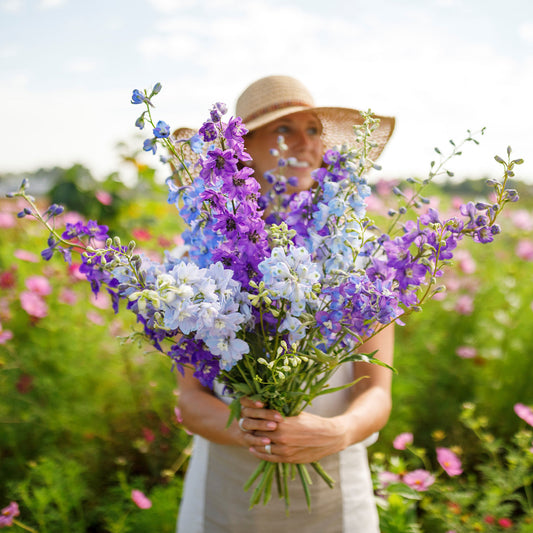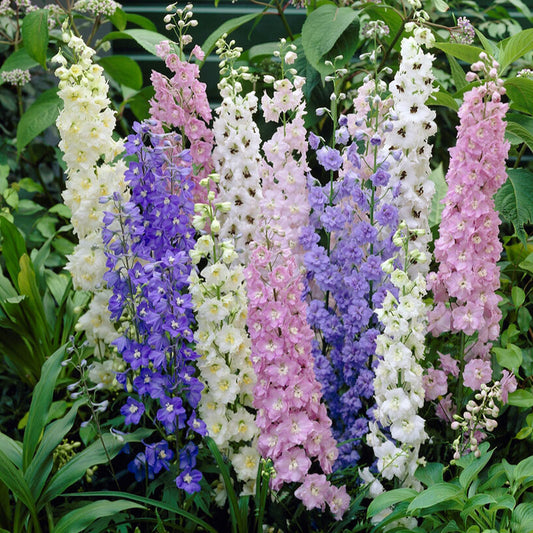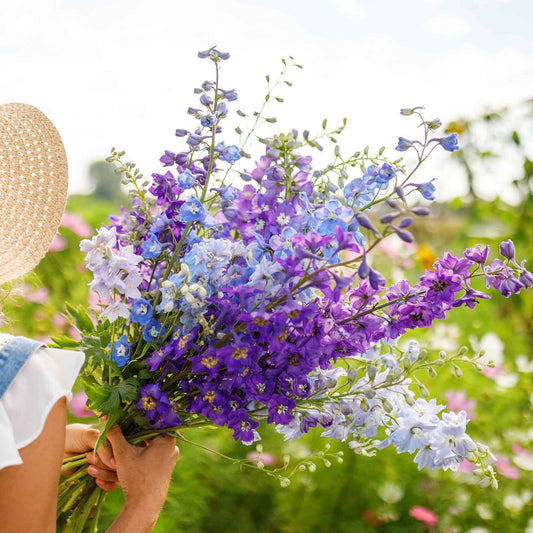-
main-collection-product-grid

Rocket Larkspur Seeds - Tall Mix
Great in fresh and dried arrangements, as they keep their colors very wellRocket Larkspur Seeds - Tall Mix
Great in fresh and dried arrangements, as they keep their colors very wellRegular price As Low As $4.99Regular priceUnit price per -
main-collection-product-grid

Larkspur Seeds - Standard Mix
Delicate flowers great for borders and cut flowersLarkspur Seeds - Standard Mix
Delicate flowers great for borders and cut flowersRegular price As Low As $4.99Regular priceUnit price per -
main-collection-product-grid

Rocket Larkspur Seeds (Organic) - Imperial Mix
Tall, dreamy spires of amethyst and aquamarineRocket Larkspur Seeds (Organic) - Imperial Mix
Tall, dreamy spires of amethyst and aquamarineRegular price $7.99Regular priceUnit price per
About our heirloom delphinium seeds
- Frequently featured in cottage gardens
- Provides an excellent spread of color
- Superb choice for cut flowers and dried flower arrangements
- Prefers full sun exposure
Grow heirloom delphinium seeds for a stunning garden
The term delphinium was inspired by sea creatures, believe it or not! Delphinium gets its name from a Greek word that means "dolphin." The dolphin-shaped petals are thought to have inspired this name. Purple, pink, and white are just a few of the color options. These towering beauties are great for border plantings and cut flowers. Many gardeners enjoy drying them for use in dried flower bouquets. Heirloom delphiniums are an incredibly stunning showcase of Mother Nature's grandeur, no matter how you display them.
Heirloom delphinium for cottage gardens
Heirloom delphinium (also known as larkspur) is a popular annual plant for those looking to create a "cottage garden" look in their yards. The leaves are strongly lobed, and in large meadowland species, the main flowering system grows erect and up to two meters tall. The flowers of the delphinium are symmetrical and have a large number of stamens. Petallike sepals develop together in the majority of species to produce hollow pockets with spurs at the end. As a result, the term larkspur was coined.
When and where to plant heirloom delphinium
Early in the season, plant heirloom delphinium in the fall or spring. Choose a location that gets full sun to partial shade and has average soil. Because delphinium dislikes being transferred, it's preferable to spread the seeds directly in the garden once all risk of frost has passed. After spacing the seeds four inches apart, lightly cover them with 1/8 inch of dirt. Thin the seedlings to 10 to 12 inches apart after germination. To encourage delphinium growth, keep the soil wet.
Water delphinium once or twice a week during dry periods. Once a month, use a general-purpose fertilizer until the blooms have bloomed. Staking can be used if the stalks begin to bow due to their weight. Delphinium plants are susceptible to frost, mildew, and fungal disease, so keep an eye on them and protect them from these issues.
Delphinium is considered to be toxic to humans and animals—most notably cattle. Exercise caution when handling and growing.
For more information about planting, growing, and caring for heirloom delphinium seeds, see the Delphinium Seeds Planting Guide.


